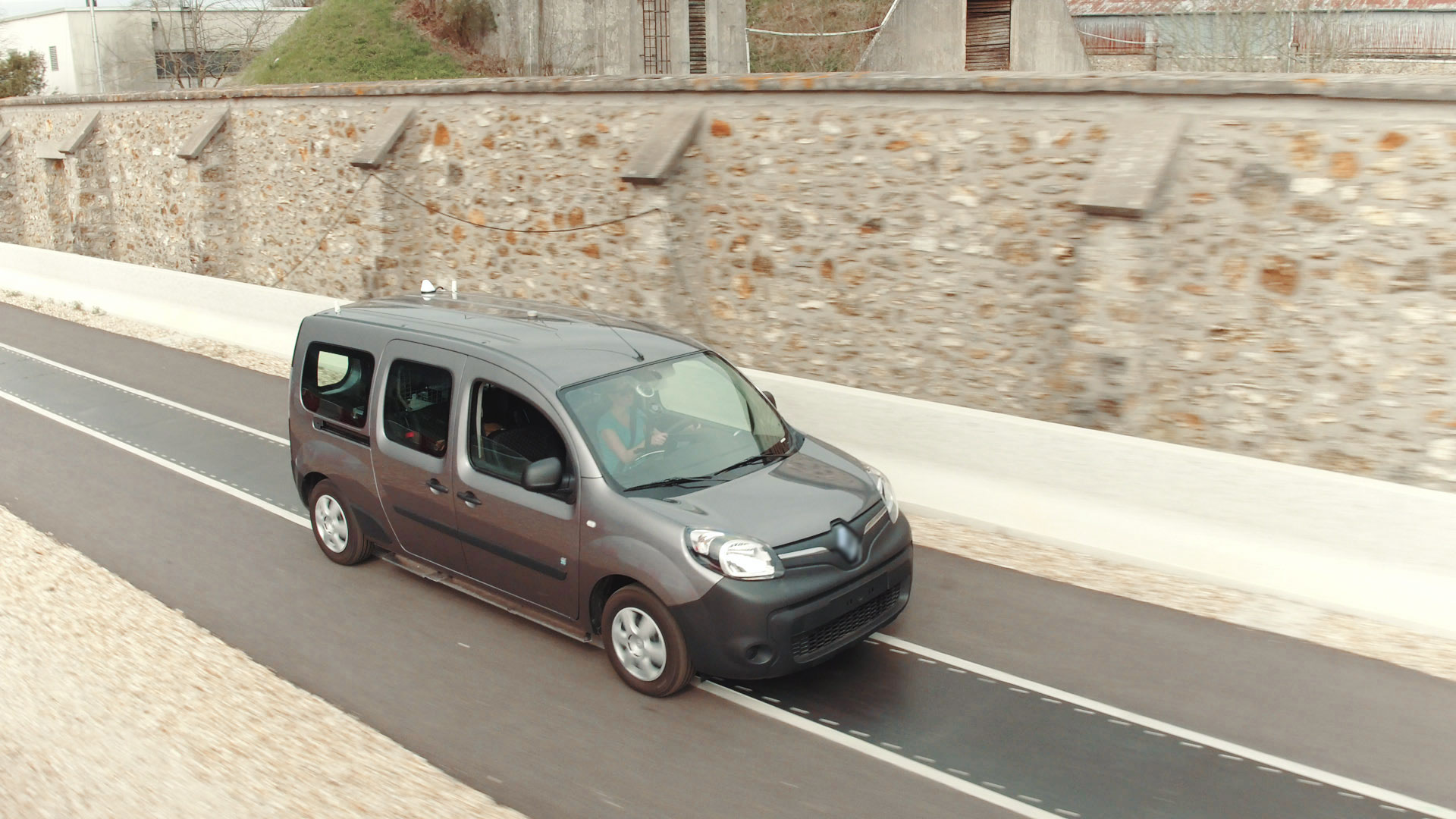

Telecommunications firm Qualcomm may have figured out a way to eliminate range anxiety in fully-electric cars. With their new technology, called Halo Dynamic Electric Vehicle Charging (DEVC), an EV can charge itself via pads embedded into the road surface. The car drives over these pads and wirelessly gets a boost to their battery, theoretically giving them unlimited range with a big enough network of juiced roadway.
The company has managed to demonstrate their new tech with an electric Renault Kangoo van at their 100-meter long test road, in Paris. They even managed to get two cars to charge on the same road simultaneously, and at various speeds.
This test road is modular, with four power supplies—one for each 25-meter section. Each length has 14 sub-modules which contain magnets and power conversion circuitry. The test vehicles were equipped with receivers in the underbody to magnetically pick up the charge and convert it to DC power.
In a five-minute video, director of engineering for Qualcomm New Zealand Mike Kissin explains how DEVC works, and what it would mean for the car industry: “We are inventors, and that’s what’s enabled us to get where we are with wireless charging technology,” said Kissin. He calls DEVC “a solid, robust, and fit for purpose dynamic charging system for electric vehicles.”
Not only would this technology be useful for current EV enthusiasts, but it would be huge for the widespread adoption of electric cars. It could help build an increase in demand that would translate to automakers responding with more EV models.
